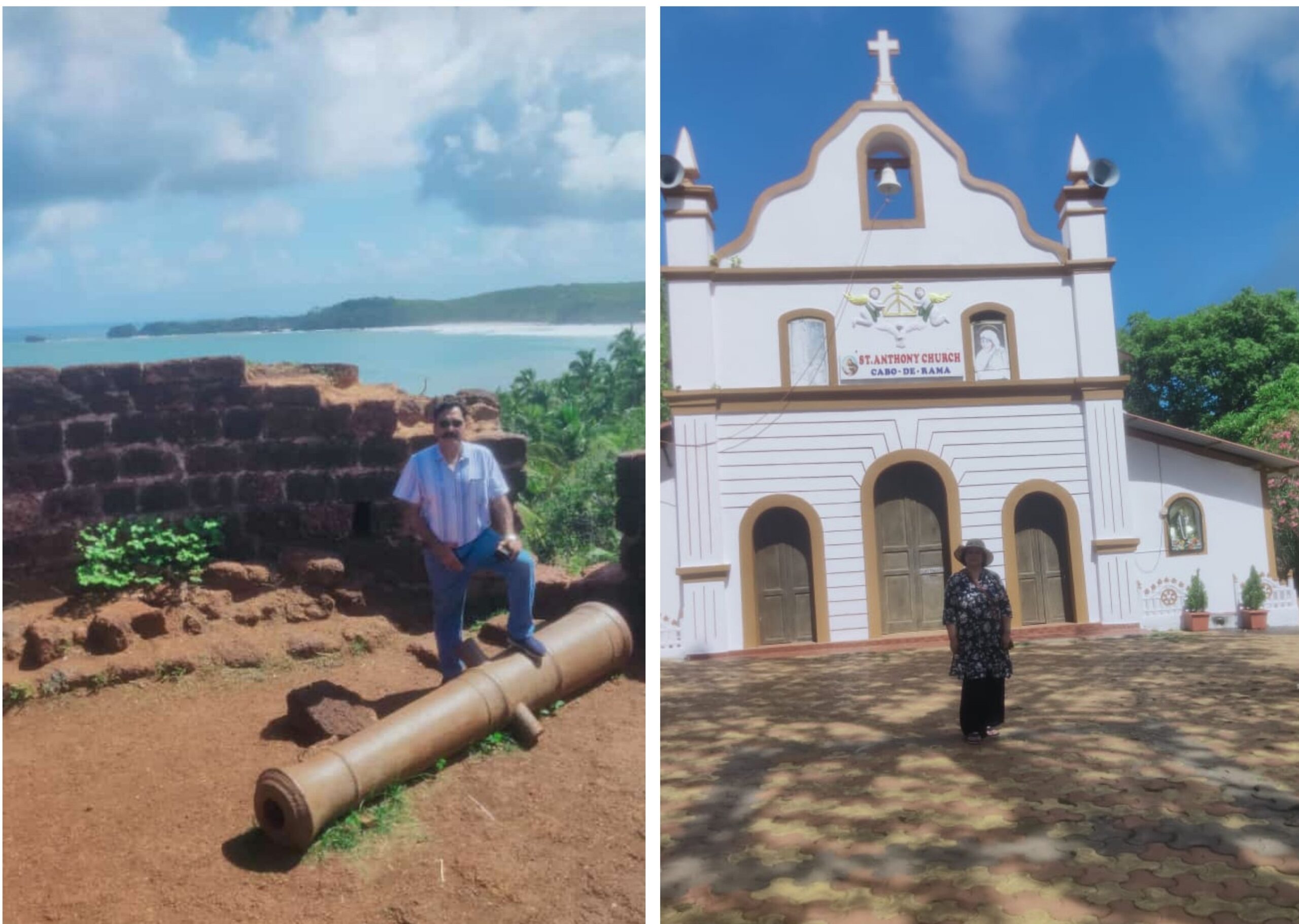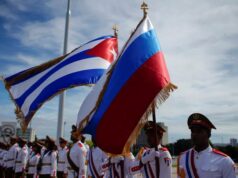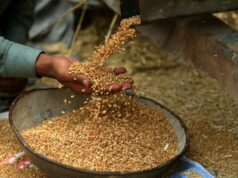Fort Cabo De Rama : Pearl Of The Orient
‘Salt in the air, sand in my hair—its Goa magic everywhere’—Anonymous

Post by Col Satish Singh Lalotra
A tiny emerald land on the southwestern coast of India, the 25th state of the union states of India, Goa has been the ever enchanting land mesmerizing anyone and everyone that comes into its contact. Geographically separated from the ‘Deccan highlands’ by the ‘Western Ghats’ as also bounded by Maharashtra to the north ,and Karnataka to the south east with the Arabian sea in the west ,this tiny land has the highest GDP per among all states. Rather two and half times as high as the GDP per capita of the country as a whole. The Latest finance commission of India named Goa as the best placed state because of its infrastructure with country’s ‘National commission on population’ rating it as having the best quality of life in India.
Over 450 years of Portuguese rule and the influence of the Portuguese culture presents to visitors a cultural environment that is not found anywhere else in India. Often described as the fusion between the eastern and the western culture with a dominance of Portuguese imprint over anything and everything in Goa from its architectural marvels to cultural and social settings the place mesmerizes everyone to no end. Travelling is exhilarating –and a little bit intimidating too, since you are venturing into the unknown and have very little ideas about what things will be in store for you. It is always a big learning curve when you leap into the new (hence the reason that one should have done a thorough research of your travel destination before you utter the word go).
The duo of self and wife having ample of time on our hands owing to school holidays in the month of June headed towards this so called ‘Pearl of the orient’. Though the month of June is not considered so conducive for a visit, still the place packs a punch in itself to make the tourists gravitate towards it.
Being flexible in drawing travel itinerary is one facet that leaves you with lots of leeway to stuff in unexplored places that one cannot find so easily available on the Google. The territory of Goais choc-a-bloc with Goa-Portuguese style architecture with forts like Tiracol, Chapora, Corjuem, Aguada, Nanus, Mormgao, fort Gaspar Dias and the southernmost irresistible Cabo de Rama.
Though for an avid traveller Goa is canvas which can be filled to one’s heart’s content in so far as visiting places of interest are concerned, yet one has to do constant juggling of his itinerary by way of either excluding many places of interest or just glossing over them due to their sheer numbers on ground.
Keeping this fact at the back of mind, the duo of us had earmarked only such places which had a mix of adventure/ risk taking element, connoting religious intent, and the ever presence touch of Portuguese in them to do justice in a real sense.
Camping at south Goa near Benaulim beach had made our access to most famous places in southern Goa more time worthy and within reach. Accordingly out of 4 days at our disposal, had kept two days each for exploration of North and South Goa.
The penultimate day having been kept for places of interest near south Goa, accordingly the southernmost part of Goa with the famous tag line—‘pearl of the orient’ i.e. Fort Cabo de Rama was on our sight-seeing radar.
Heading in a south westerly direction taking the road NH-41 and passing by areas like Varca, velim, Matimoletc reached finally at fort Cabo de Rama covering a distance of about 26 kms. The actual nomenclature of the fort stands as –‘Parco do Cabo de Rama’ and comes under the classification of medieval hill forts category.
With the fame of being one of the oldest and largest forts in Goa, Cabo de Rama is a place one cannot miss when on a tour to Goa. Located about 16 kms north of Agondabeach, this fort is spread over an area of 18,000 square meters with the cape on which this fort is located also known by the same name.
The fort is supposed to have religious connotations too since legend says that lord Rama along with his beloved wife Goddess Sita and brother Lakshman had resided over here during their exile which lasted for fourteen long years.
Originally the fort was built by the Hindu rulers, the ‘Soonda kings’ who arrived from neighboring Karnataka just across Goa’s borders.
The Soonda were the original builders of this formidable fort who used to rule their kingdom from here. There were a few battles between the local Hindu kings with their Muslim counterparts, eventually the fort falling in the hands of the Portuguese in 1763.
The Portuguese were attracted to this place because it afforded a clear view of the coast line and further into the Arabian Sea from where they could have a bird’s eye view of the advancing enemy both by the sea and the land.
The fort presently is in ruins which we saw for the first time when having alighted from our vehicle walked past about 100 yards near a non-descript entrance cum bridge that stands to till date. This bridge is a testimony to the engineering marvel that has stood the test of the time for more than 300 years. One can see loose cannon that lie near the entrance of the fort with even the markings of the manufacturing year clearly visible. Even the bastions where these large cannons were fitted are clearly visible to this day. These cannons were made of solid iron hence the reason for their still standing tall and erect. As one moves ahead you can see the beautiful St Antonio church, which is still in use. Local catholic Christians carry out regular service here.
Once a year there is feast as well over here. There are a few ruins of buildings too nearby that could have been used for housing the troopsonce upon a time. There is a small grotto with the statue of Virgin Mary besides the St Antonio chapel. The unused portion of the church is just behind the main façade whose roof has caved in due to passage of time and lack of care and preservation of the same. However on enquiry from the main gate entrance we were given to understand that the place is still used by the members of NIO (National institute of oceanography) who come here regularly for their observations. There is a watch tower too to the right where there was a strong gun emplacement with a gun to protect the coast line. To our amazement we found a pond too below this area with an ancient Hindu architectural set of designs that clearly goes back to the ‘Soonda regime’ days. It seems there could have been a temple of lord Ram too besides this lake in its heydays.
Nowadays there is a small path from the left hand side of the fort within the fort premises only that leads down the other side of the wall of the fort ultimately merging with the western side of Cabo de Rama beach. A flight of stairs made up of stones goes down all the way weaving its path among the raft of coconut trees that seems to vanish among the huge boulders lining the beach front and being hammered constantly by the sea waves. Since almost the entire crowd of tourists finally land up near this place, human ingenuity has found its way to make some quick money wherein few shacks too have come up with eatables, refreshments etc for the tired visitors. Having spent some time over here resounding with the thundering waves of Arabian Sea, both of us took leave and climbed out of this area via a narrow passageway made in the fort wall, thus re-entering the fort premises.
It is not for nothing that successive rulers dating back to the ‘Soonda regime’, to the Portuguese and finally the British made use of this once imposing fort casting an ever vigil eye on the Arabian sea coastline. As stated before too in this write up, it takes lots of determination, self-discipline and a sense of wanderlust in your being to go to such places in order to unravel this country’s untapped historical importance that screams atop such forts in decibels which cannot be unheard of by an ordinary tourist. Need is to reinvent, repackage and redo the entire scenarios built around such ‘pearls of the orient’ to act as a beacon of India’s tourism potential in its entirety.



